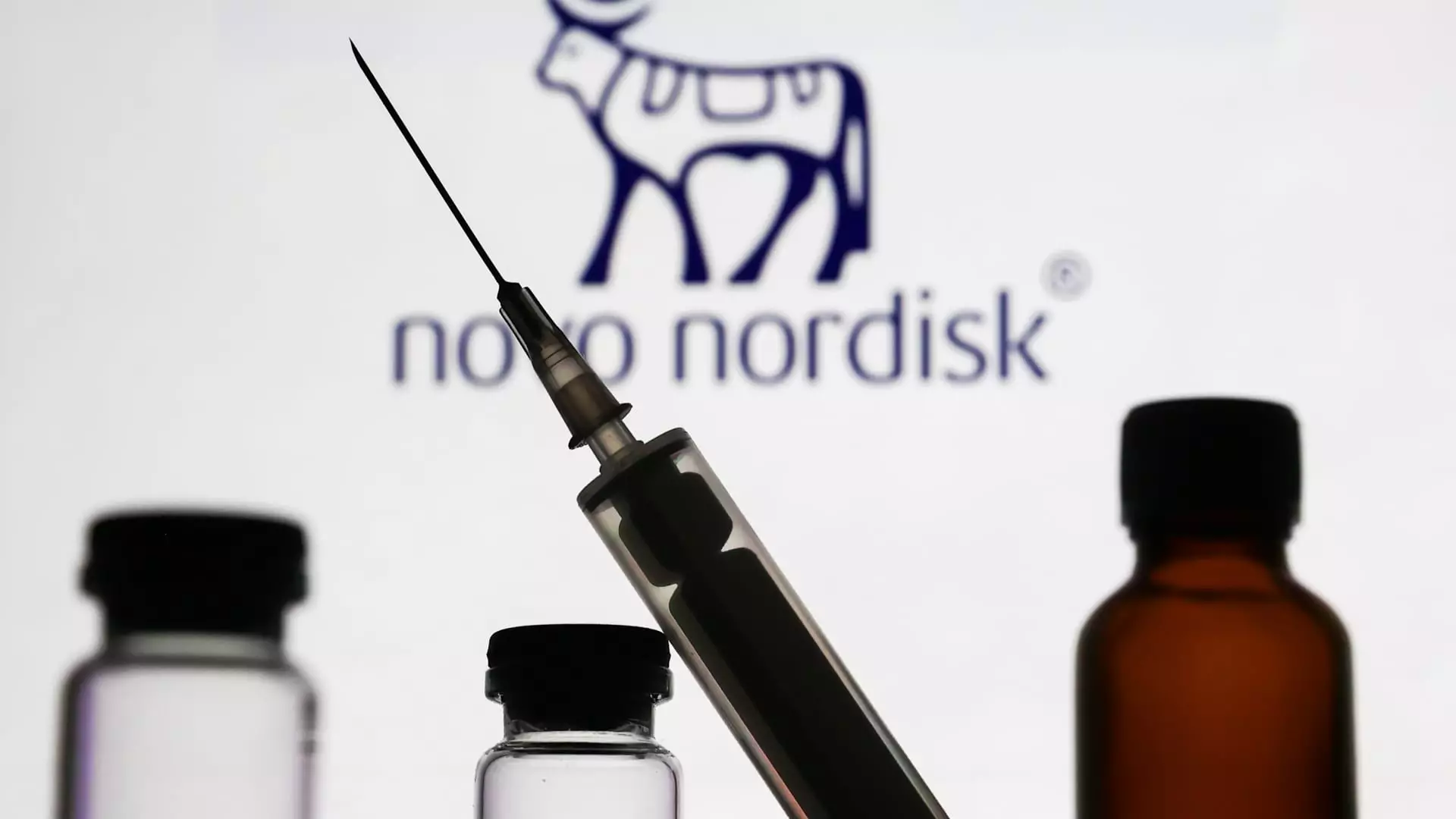The biotechnology landscape is often a patchwork of astounding growth and sobering realizations, exemplified recently by Novo Nordisk’s latest financial disclosures. The Danish pharmaceutical juggernaut has seen its shares appreciate following a stronger-than-anticipated net profit in the fourth quarter, underscoring the burgeoning demand for its Wegovy obesity drug. Nevertheless, despite these encouraging figures, future projections hint at potential headwinds, raising questions about the sustainability of such growth in a highly competitive market.
In the fourth quarter, Novo Nordisk showcased a 29% increase in net profit, reaching 28.23 billion Danish kroner (approximately $3.98 billion), surpassing analysts’ expectations of 26.09 billion kroner. This robust performance contributed to a full-year net profit of 100.99 billion kroner, a 21% surge that also exceeded the forecast of 99.14 billion kroner for the entire year, signifying a period of admirable financial health for the company. Following this announcement, shares initially soared, before slightly retracting to a 4.18% gain—a notable reaction that illustrates investor enthusiasm tempered by caution.
The significant growth in the company’s revenues can primarily be attributed to Wegovy, which has carved a niche for itself in the competitive obesity treatment market. The drug displayed an astounding 107% year-on-year increase in sales, generating 19.87 billion kroner in the last quarter alone, albeit falling marginally short of analyst predictions.
While the financial figures appear impressive, the forecast for future growth dampens the celebratory mood. Novo Nordisk anticipates a slowdown in sales growth for 2025, estimating between 16% to 24% based on constant exchange rates—this is a noticeable dip when compared to the more robust 18% to 26% forecasted for 2024. The company cites “intensifying competition and continued pricing pressure” within the diabetes and obesity care market as pivotal factors contributing to this caution.
Susannah Streeter, a financial analyst with Hargreaves Lansdown, points out the significance of the wider range in guidance, implying that the company’s current market share might be approaching its peak. However, she remains optimistic about the long-term prospects for obesity drugs due to their perceived health benefits. Her commentary highlights the potential for expansion if regulatory bodies approve more applications for these drugs, which underscores the dynamic nature of this sector.
Novo Nordisk is not operating in isolation; it is part of a rapidly evolving sector characterized by innovation and fierce competition. The company’s offerings, especially Wegovy, compete against similar treatments offered by rivals like Eli Lilly, whose Zepbound also utilizes GLP-1 analogue technology to manage obesity by mimicking glucagon-like peptide-1, a hormone that curtails hunger.
The recent advances in obesity medications hint at a promising future but also pose challenging questions: Can these newly developed compounds stand up to established players, and are they sufficiently effective to gain traction in a multi-faceted healthcare market that is increasingly scrutinizing treatment outcomes?
The disappointing results from the late-stage trials of Novo’s experimental CagriSema treatment also signal potential hurdles. The treatment, which combines semaglutide—the active ingredient in Wegovy—with Cagrilintide, fell short of the anticipated average weight reduction of 25%, instead showing only a 22.7% drop in weight. The implications of such results can resonate beyond immediate stock prices, potentially impacting investor sentiment and market positioning.
Despite the hurdles, there remains a silver lining for Novo Nordisk. Promising early-stage results for its Amycretin drug also targeting obesity demonstrate ongoing research and innovation at the company. Additionally, the planned further study of CagriSema, with an eye towards regulatory approval in early 2026, illustrates the company’s commitment to advancing its portfolio despite recent setbacks.
As Novo Nordisk navigates its complex landscape filled with both opportunity and challenges, attention will be focused on how effectively it can compete within the increasing number of obesity treatment options available. The coming months will be crucial, providing insights into how the company balances innovative product development against competitive pressures, pricing dynamics, and regulatory landscapes. Overall, while Novo Nordisk has established a robust presence in the market, the road ahead appears laden with both challenges and opportunities that will test its agility and strategic foresight.


Leave a Reply